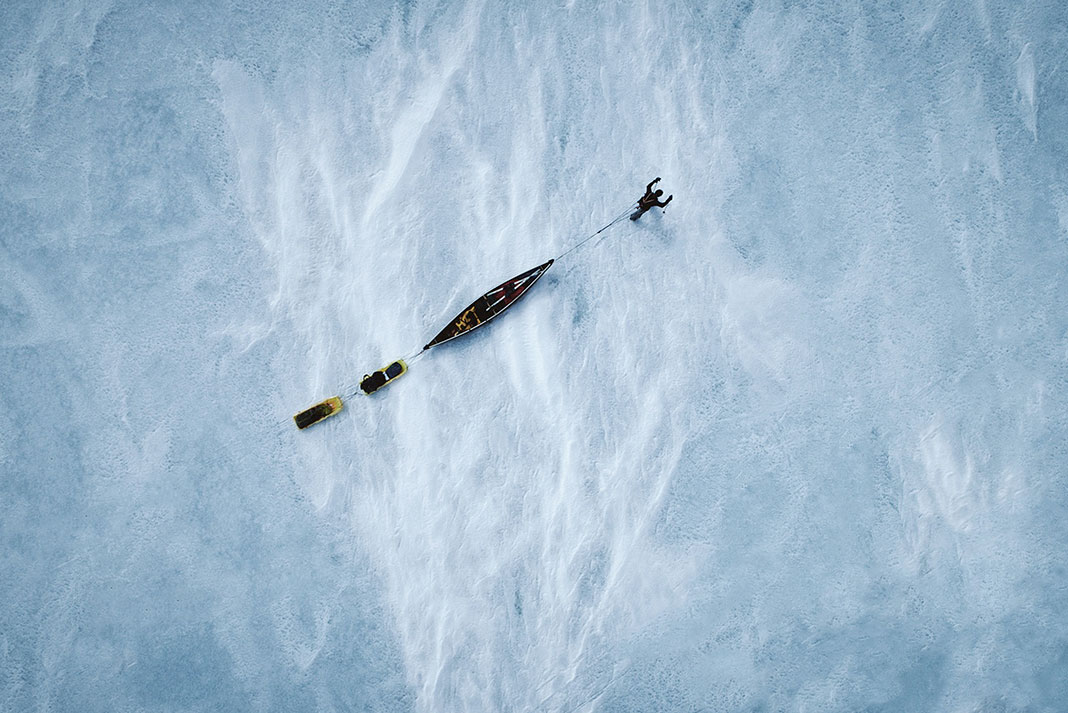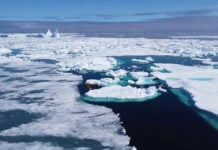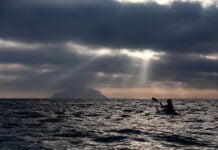Polar explorer Will Steger says, “Expeditions have kept me young.” This spring, at the age of 77, he set off on another two-month solo canoe-sled trip above the Arctic Circle.
On thin ice: Will Steger’s solo Arctic expeditions
Traveling by canoe-sled during the risky spring breakup has become something of an annual meditation retreat for Steger in his seventies. “It’s a really beautiful way of travel. On the thin ice, you have to be in the moment at all times. You have to be at your extreme best,” he says.
Steger perfected his canoe-sled system over the last three decades with the help of Ted Bell of Minnesota’s Northstar Canoes. The canoe is an essential piece of kit to get over bad ice and open water, and made possible Steger’s 1995 Arctic Ocean crossing, from Russia to Canada via the North Pole. Modifications are made to square off the entry lines in the bow and stern to lessen resistance over snowdrifts, and removable plastic dog sled runners are bolted on.

“My biggest fear is cold water—especially being swept under the ice. I’m working the fear out of my system,” Steger says.
As one of the most renowned polar explorers of the modern age, Steger has a humbling list of accomplishments, including leading the first dogsled expedition without resupply to the North Pole. His 1990 non-motorized crossing of Antarctica—also a first— has brought him back into the spotlight with the release of After Antarctica.
Steger revisits an earlier expedition
The new documentary film features the dangers and tension of the Trans-Antarctic Expedition—a 4,000-mile, seven-month traverse of the frozen continent by dogsled. The expedition brought together six explorers from six nations and captured the world’s attention. Steger was its leader.
“What is so inspiring about the expedition is it was bigger than themselves. It was an opportunity to draw together in international cooperation to ratify the Antarctic Treaty,” says director Tasha Van Zandt. The expedition achieved its goal in 1991, protecting Antarctica from oil and mineral exploration for another 50 years.
“On Antarctica, we set an example that a small team of people can change the world,” says Steger.
The documentary features archival footage from the 1990 expedition, interspersed with modern reflections from Steger on his 1,000-mile, two-month canoe-sled journey in 2019. Van Zandt captured this photo on the final day of the expedition as Steger pulled his canoe-sled on the Arctic Ocean.
From Arctic firsts to lasts
The solo trips ground and recharge Steger for his work as a climate advocate at the Steger Wilderness Center in Ely, Minnesota. “I was fortunate to do some geographical firsts, but I will go down in history for lasts,” says Steger in After Antarctica. “You can’t do the expeditions I did—the routes don’t exist anymore. Every ice shelf I traveled has disintegrated.”
Yet, he remains hopeful as increasingly the public is seeing climate change firsthand, he says.
“We’re all eyewitnesses now. Whenever I get overwhelmed by climate, I reflect on the Trans-Antarctic Expedition and what we did on that small team. Through international cooperation, we helped preserve Antarctica. Now, we have to look at preserving the world we live in.”
This article was first published in the Early Summer 2022 issue of Paddling Magazine. Subscribe to Paddling Magazine’s print and digital editions, or browse the archives.
“When you’re on a solo, you see your life so clearly,” says Will Steger, pictured here on the Arctic Ocean in 2019 at the end of a 1,000-mile solo expedition at the age of 74. | Feature photo: Tasha Van Zandt








